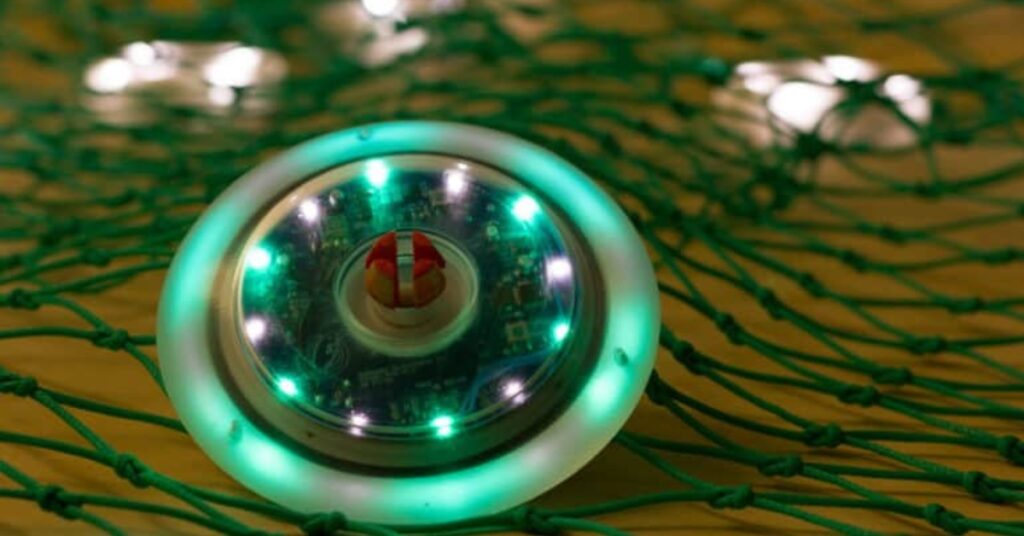10 Proven Ways LED Lighting Supports Sustainable Fishing
The global demand for fish protein is rising, putting immense pressure on our oceans and marine ecosystems. Traditional fishing practices often lead to overfishing and unintended bycatch, jeopardizing the health of our oceans and the future of fish populations. But amidst these challenges, a glimmer of hope emerges—LED Stadium Lights and other LED lighting technology. This article delves into the exciting potential of LED lighting to support sustainable fishing practices. We’ll explore how LEDs can contribute to: By understanding these benefits, we can ensure a more sustainable future for our oceans and the fishing industry. LED lighting in fishing can also have social impacts, such as [specific social impact]. Understanding these social implications is important for ensuring that the adoption of LED lighting in fishing is not only environmentally and economically sustainable, but also socially responsible. The Challenges of Traditional Fishing Practices Fishing has relied on various methods to attract and catch fish for centuries. However, traditional practices often come with unintended consequences for the marine ecosystem. Here’s a closer look at some of the key challenges: How LED Lighting Supports Sustainable Fishing The Science Behind LED Lighting in Fishing LED (Light-Emitting Diode) lighting has revolutionized many industries, including fishing. Unlike traditional lighting, LEDs offer advantages such as energy efficiency, longevity, and environmental benefits. In fishing, LED lighting is used to attract or repel certain species, thereby enhancing the selectivity of fishing methods. However, it’s important to note that LED lighting may not be suitable for all fishing scenarios, and there may be instances where other methods are more effective or appropriate. Reducing Bycatch with LED Lighting Bycatch, the unintentional capture of non-target species, is a significant issue in commercial fishing. LED lighting, a powerful tool in the hands of responsible fishermen, supports sustainable fishing by reducing bycatch. Studies have shown that specific wavelengths of LED light can deter unwanted species while attracting target fish. For instance, blue and green LEDs have effectively reduced bycatch in shrimp trawling operations. Energy Efficiency and Cost Savings LED lighting is known for its energy efficiency, consuming significantly less power than traditional lighting options. This energy efficiency translates into cost savings for fishing operations, a boon for the fishing industry. By switching to LED lighting, fishermen can reduce their fuel consumption and overall operational costs, making their activities more sustainable both economically and environmentally. Applications of LED Lighting in Sustainable Fishing LED Lights in Fishing Nets One of the primary applications of LED lighting in sustainable fishing is modifying fishing nets. By integrating LED lights into nets, fishermen can influence the behaviour of marine species. This can be done by [specific method of integration], which allows the LED lights to [specific effect on fish behavior]. This integration process is [specific details about the process], making it a practical and feasible solution for fishermen. LED Lighting in Fish Aggregating Devices (FADs) Fish Aggregating Devices (FADs) attract pelagic fish species, such as tuna. Traditional FADs rely on natural or artificial materials to attract fish, but adding LED lights can enhance their effectiveness. LEDs can mimic the bioluminescence of prey species, drawing fish towards the device and making the fishing process more efficient. Underwater LED Lighting for Aquaculture LED lighting can also benefit aquaculture, fish farming, and other aquatic organisms. Underwater LED lights can create optimal conditions for the growth and health of farmed fish. By adjusting the light spectrum and intensity, aquaculturists can promote faster growth rates, improve feed conversion ratios, and reduce stress in fish populations. Comparison of Traditional and LED Lighting in Fishing Aspect Traditional Lighting LED Lighting Energy Consumption High Low Lifespan Short Long Bycatch Reduction Limited Significant Environmental Impact High Low Operational Costs High Low The Environmental Impact of LED Lighting in Fishing Minimizing Light Pollution Traditional fishing lights can contribute to light pollution, disrupting marine ecosystems and affecting the behaviour of nocturnal species. LED lighting supports sustainable fishing by minimizing light pollution. For instance, LEDs can be used in purse seine fishing to attract specific species while reducing the attraction of non-target species. They can also be precisely controlled to emit specific wavelengths and intensities, reducing their impact on the surrounding environment. Reducing Carbon Footprint The energy efficiency of LED lighting not only reduces operational costs but also lowers the carbon footprint of fishing activities. By consuming less power and lasting longer than traditional lighting options, LEDs contribute to a more sustainable and eco-friendly fishing industry. Promoting Biodiversity Conservation LED lighting supports biodiversity conservation in marine ecosystems by reducing bycatch, which refers to the unintentional capture of non-target species during fishing operations, and minimizing environmental impacts. Sustainable fishing practices incorporating LED technology help preserve the delicate balance of marine life, ensuring the long-term health of ocean habitats. Future Prospects and Innovations in LED Lighting for Fishing Advanced LED Technologies With continuous technological advancements, the future of LED lighting in sustainable fishing is brimming with potential. Researchers are exploring new LED materials and designs that can further enhance the selectivity and efficiency of fishing operations. Innovations like programmable LEDs and intelligent lighting systems are on the horizon, offering even more significant potential for sustainable fishing. This exciting prospect inspires hope for a more sustainable and responsible fishing industry. Integration with IoT and Smart Fishing Systems It is exciting to integrate LED lighting with Internet of Things (IoT) technology and intelligent fishing systems. IoT-enabled LED lights can be remotely controlled and monitored, allowing fishermen to adjust lighting conditions in real time based on environmental data. This level of precision and control can optimize fishing operations and further reduce their impact on marine ecosystems. For example, IoT can be used to automatically adjust the intensity and colour of LED lights based on the time of day and the presence of target species, thereby reducing the attraction of non-target species. Collaboration and Policy Support The widespread adoption of LED lighting in sustainable fishing is a collective effort. It requires collaboration between various stakeholders, including fishermen, researchers, policymakers, and environmental organizations. Your support and active
10 Proven Ways LED Lighting Supports Sustainable Fishing Read More »


